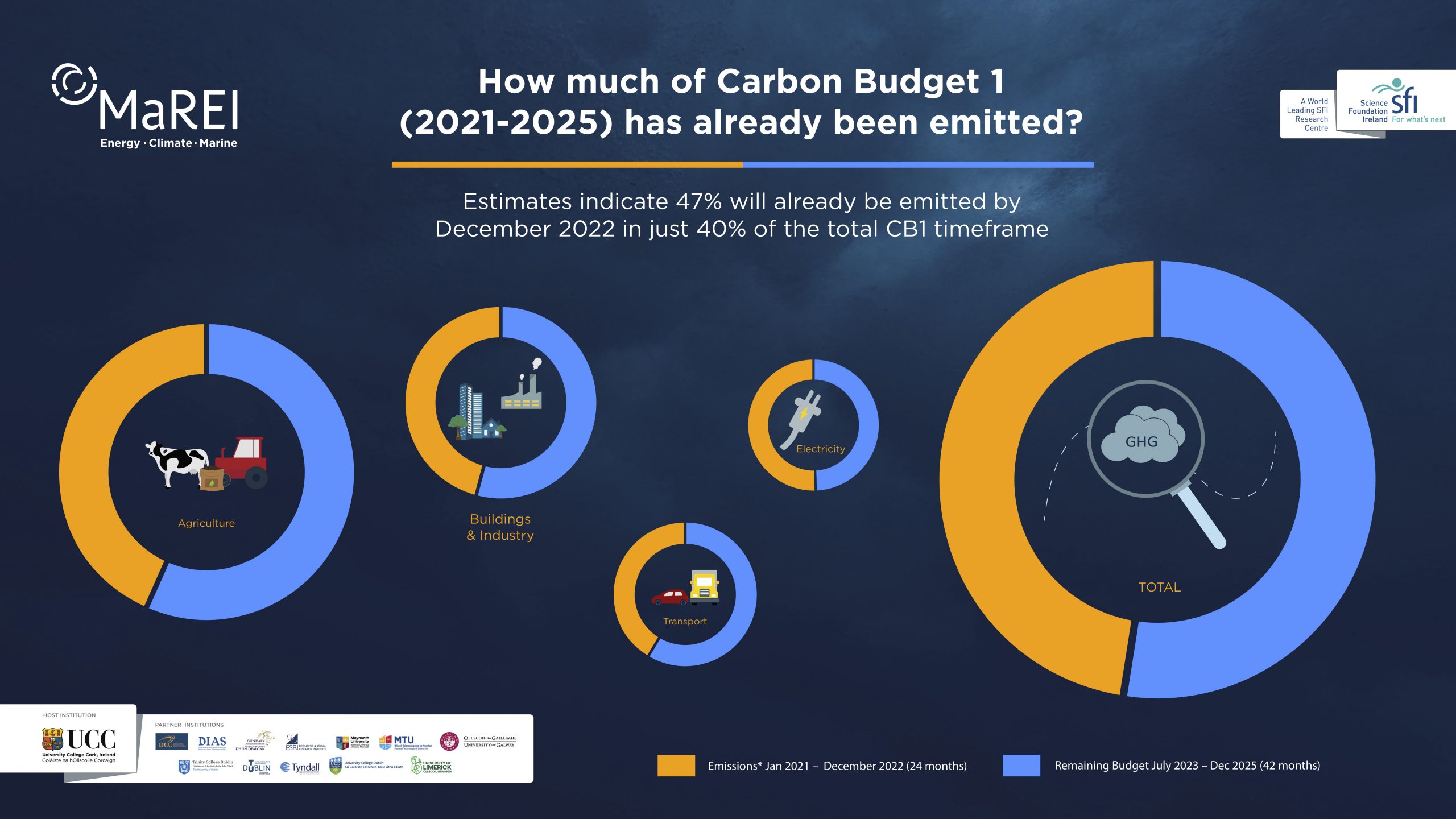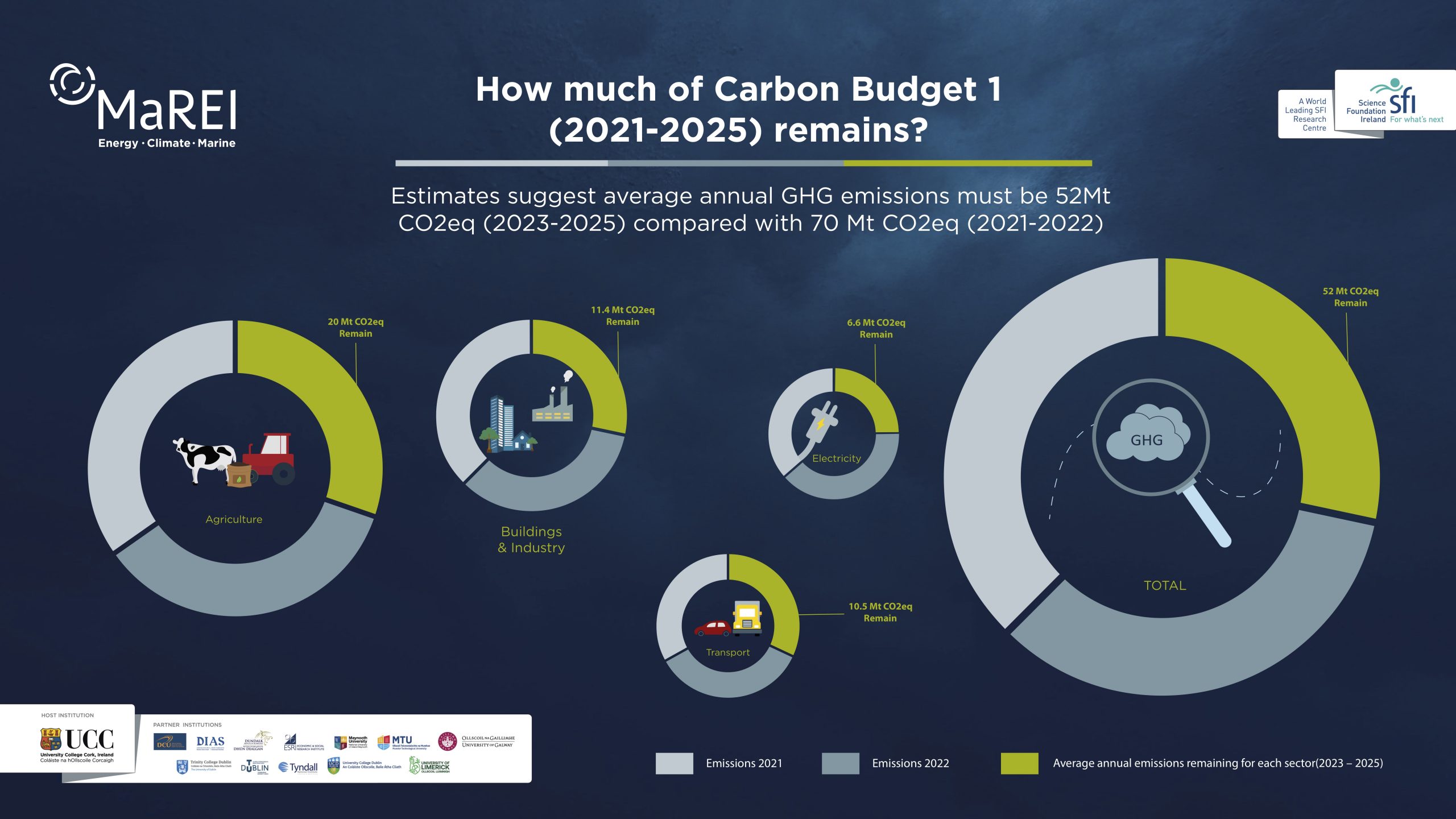
How much of Carbon Budget 1 (2021-2025) has already been emitted and remains?
The Oireachtas approved carbon budgets for Ireland in April 2022. These establish in five yearly blocks of time an upper limit for the total amount of greenhouse gas (GHG) emissions that Ireland can emit. The first two carbon budgets, covering the periods 2021 – 2025 and 2026 – 2030 seek to ensure that Ireland meets the 51% GHG emissions reduction target by 2030 as legislated for in the Climate Action And Low Carbon Development Act 2021.
The first carbon budget requires Ireland to remain within a total GHG emissions upper limit of 295 Mt CO2eq (295 million tonnes of carbon dioxide equivalent) in the period 2021-2025. Early estimates from MaREI for the two-year period 2021-2022 suggest that by the end of this year, we will have emitted 139 Mt of the carbon budget with three years left to go. So we’re heading for nearly half (47%) of the carbon budget already gone in 40% of the time.
This means that the remaining budget left over the next three years (2023-2025) will be 156 Mt, or 52 Mt on average per annum. This compares with 70 Mt GHG on average emitted per annum in the period 2021-2022.
In addition to the carbon budgets, the Irish Government approved sectoral emissions ceilings in July 2022. Sectoral Emissions Ceilings refer to the total amount of permitted greenhouse gas emissions that each sector of the economy can produce during a carbon budget five-year period. Ceilings were set for electricity, transport, buildings, industry, agriculture and other, but not yet for land use, land use change and forestry.
MaREI estimates of GHG emissions data for the period 2021 – 2022 indicate that some sectors will be more challenged than others in the next three years to remain within the sectoral emissions ceiling.
> For electricity, the average annual emissions need to be less than 7 Mt over the next three years, and our annual average over the past two years is more than 10 Mt. While renewable electricity is growing, so too is electricity demand and our continued reliance on coal-fired electricity make this really challenging
> For buildings and industry, the average annual emissions need to be 11 Mt, and our annual average over the past two years is 15 Mt. This will require a massive acceleration of retrofitting, coupled with sustained energy demand reductions, increased renewable heat supply and energy efficiency improvements in industry.
> For transport, the average annual emissions need to be less than 11 Mt, and our annual average over the past two years is more than 11. The previous two years does include a period of reduced transport due to the COVID-19 pandemic. Reducing car dependency is critical here, increasing walking cycling and public transport, along with accelerated electric vehicle sales and increased biofuels in freight transport.
> For agriculture, the average annual emissions need to be less than 20 Mt, and our annual average over the past two years is more than 23. There are indications of some mitigation measures being implemented in agriculture but continued growth in dairy cow numbers is offsetting these gains.
> For land-use, land-use change and forestry (LULUCF) we do not yet have a sectoral emissions ceiling, but these emissions are growing, not reducing. The sectoral emissions ceiling is expected in 18 months, but by then, there will be very little time to adjust other sectoral emissions ceilings if necessary in order to meet the first carbon budget.
RTE’s Prime Time aired this research – watch it here (starting at 31:19)









